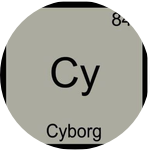Please wait...
About This Project
32ATPs R&D Lab (www.labs.32atps.com)
Batteries create toxic waste, which goes directly into our landfills. 32ATPs has an innovative idea to lessen the environmental impact of energy production and storage for use in our electronic devices, while at the same time increasing the battery life of our handheld devices: by harnessing the power of natural cellular energy production. The goals of this project are to perform basic research on biological energy production and storage.

Browse Other Projects on Experiment
Related Projects
Open technologies for the identification of local fungi for decentralized biofabrication
The use of Open Scientific Hardware and locally produced reagents would enable biomaterial-focused citizen...
Leveraging understudied spider species to uncover novel biology
Over $1.425B has been invested into spider silk companies, yet less than 20 annotated spider genomes are...
Laser directed infrared spectroscopy to analyze microplastics down to 20 microns and speed up data analysis
Microplastic analysis is a very time-consuming procedure while smaller-sized plastics (<300 microns...



